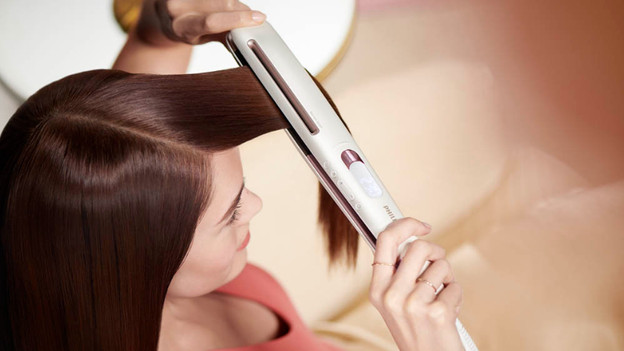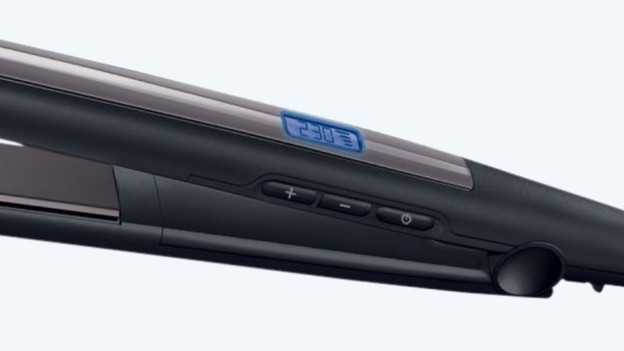
Written by Iza
Edited on
17 September 2024
·
07:56
How do you choose a hair straightener?
With most hair straighteners, you can also create wavy hair or curls. Which hair straightener is most suitable for you depends on a couple of things. Do you have thick, thin, or damaged hair, and how often do you want to use the hair straightener? We'll explain to you what to keep in mind, so you can choose the best one for you.

Choose a hair straightener
Before you purchase a hair straightener, it's useful to ask yourself the following questions:
- Do you want basic heat protection or extra heat protection?
- What's your hair type?
- Do you often have frizzy and static hair?
- Do you have damaged hair?
Do you want basic heat protection or extra heat protection?

Basic protection
The question may seem obvious, but it's not. Because a hair straightener with ceramic coating is sufficient if you straighten your hair once in a while. The ceramic coating protect your hair from the heat, but does wear faster than completely ceramic plates. That's why your strands are less protected from the heat. This means hair straighteners with a ceramic coating have a shorter lifespan and have to be replaced sooner with average use.

Extra heat protection
The more often you use the hair straightener, the more protection your hair needs. You protect your hair best from the heat with a hair straightener with completely ceramic or titanium plates. These plates distribute the heat evenly. That way, you can prevent part of your hair becoming too hot while the other part barely receives any heat. In addition, the plates don't wear and the hair straightener lasts a lot longer. These hair straighteners are generally a little more expensive than straighteners with a ceramic coating.
What is your hair type?

Thin hair
Slim plates are suitable for you if you have thin or fine hair. You can work precisely and don't straighten much hair at once. In addition, it's more pleasant to straighten with slim or short plates when you have shorter hair. That's because it's easier to straighten specific parts of your hair. You can also easily take this hair straighteners with you when you travel.

Thick hair
If you have a lot or thick hair, we recommend a hair straightener with wide or long plates. Wide plates are especially useful for thick hair, because you can fit a lot of hair in between. Long plates are especially suitable for long hair, because you can straighten more hair in one go thanks to the length. You'll be done sooner compared to a hair straightener with slim or short plates.

Do you often have frizzy and static hair?
A hair straightener with ionic technology ensures a frizz-free and non-static hairdo. During straightening, your hair gets a positive charge and your hair scales open. Because of this, your hair becomes static and frizzy. A hair straightener with ionic technology spreads negative ions through your hair, so the scales close and your hair gets a nice gloss. If you hair often gets frizzy and static, choose a hair straightener with ionic technology.

Do you have damaged hair?
With most hair straighteners, you can adjust the temperature yourself. That way, you can set the straightener to your hair type. Do you have thin, damaged, fine, or died hair? We recommend a hair straightener with a minimum temperature of 180°C or lower. The lower the temperature, the smaller the change on damaged hair due to the heat. For undamaged hair, we recommend a maximum temperature of 200°C. For thick or frizzy hair, we recommend a temperature of 180°C or higher.
Article by Iza
Hair Straightener Expert
